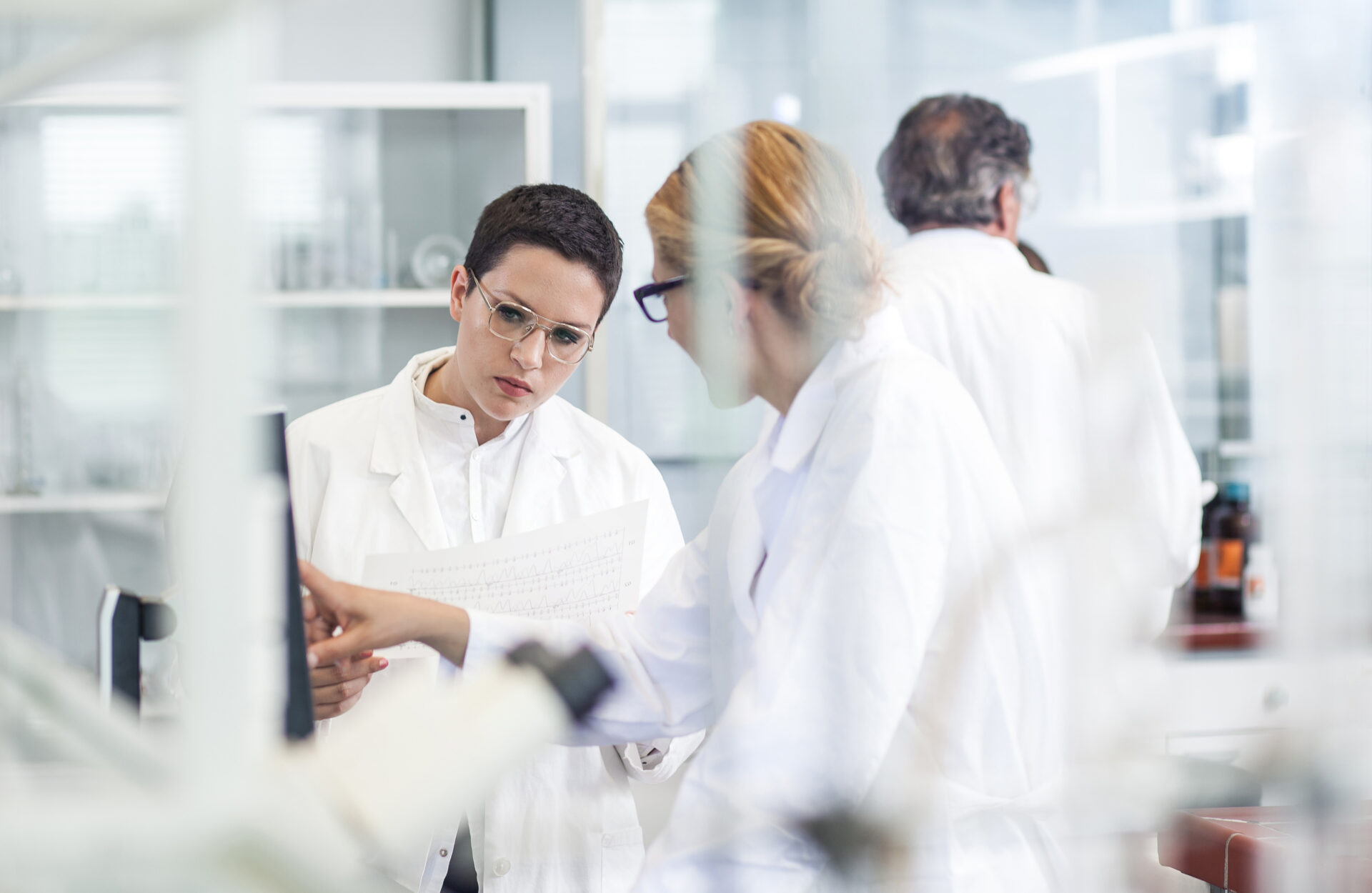Finasteride was born of research in 1947 by Julianne Imperato-McGinley, inspired by a Caribbean tribe subject to a genetic mutation that made the dihydrotestosterone (DHT) level of some male individuals particularly low.
This discovery led to the drug, which was developed and approved by the Food and Drug Administration (FDA) in 1992. It is now globally recognized for its effectiveness in inhibiting 5α-reductase, which is responsible for the conversion of testosterone to dihydrotestosterone.
Along with other key active ingredients for male well-being, Finasteride is part of the portfolio of products for which we manage the distribution along all the steps necessary to deliver the active ingredient directly to our customers, from scouting to importation, supporting them in the regulatory phase.
What is Finasteride used for?
Finasteride is a particularly effective inhibitor against type II and type III 5α-reductase isoenzyme, which is why it was initially approved for the treatment of benign prostatic hyperplasia (BPH) with doses of 5 mg. In 1997, it was also recognized as a valuable ally for combating hair loss in men with a dose reduced to 1 mg. Other uses of Finasteride are the treatment of hyperandrogenism in women, such as hirsutism.
How long does Finasteride treatment last?
Depending on the type of issue being treated and dosage, indications for use vary. In general, Finasteride treatment affects the patient for very long periods that can extend to as long as 6 or 12 months of continuous intake.
This product is designed for a long therapeutic period, showing its benefits steadily and progressively. Once intake is terminated, dihydrotestosterone levels return to normal in about 14 days.
Finasteride: side effects
Finasteride affects the production of androgen hormones, which in humans are involved in regulating important functions such as the development of primary and secondary sexual characteristics, spermiogenesis, aggression, and libido. Because of this relevance, hormonal change can substantially impact the body, and the drug can cause side effects.
The scientific literature on this subject is very rich, especially concerning decreased libido, erectile dysfunction, and ejaculatory dysfunction, issues that can affect 2% to 4% of cases. The likelihood of these side effects increases if other alpha-blocker medications are taken.
Other complications related to Finasteride use have been the subject of recent studies, particularly regarding:
- The development of type 2 diabetes mellitus in men with benign prostatic hyperplasia who are taking alpha-blockers, compared with treatment with other drugs.
- The development of “post-finasteride syndrome,” a syndrome that tends to occur from the time the drug is discontinued and involves several sexual, physical, and neurological side effects.
However, the field of research on the possible adverse consequences of Finasteride is growing, and further experimental studies are needed.
Finasteride for the treatment of alopecia and hair loss
Androgenetic alopecia (male pattern baldness), or the progressive loss of hair, particularly on the forehead and temples, is a hereditary condition and affects more than 70% of men over the age of 80. It is a widespread problem related to dihydrotestosterone, as this hormone causes thinning of follicles and, thus, a decrease in hair volume and number.
In 1997, the FDA approved Finasteride, at limited dosages, as a viable solution to the problem, considering that it does not allow complete reduction of DHT and thus may slow hair loss but not stop it permanently.
Finasteride for the treatment of prostate symptoms
The most common use of Finasteride, however, is to counteract benign prostatic hyperplasia (BPH), a non-cancerous increase in prostate gland size that, among other symptoms, causes discomfort in urination while also increasing the risk of urinary tract infection and, in severe cases, kidney infection.
In these cases, Finasteride stops or slows down complications due to the disorder by decreasing the prostate gland volume. It is a particularly useful medication because, in addition to relieving symptoms, it allows the patient not to immediately resort to the particularly invasive transurethral resection of the prostate (TURP) surgery.

Finasteride and Dutasteride: what are the differences?
Both Finasteride and Dutasteride are drugs belonging to the category of alpha blockers, acting specifically on the 5α-reductase enzyme, and consequently on the production of dihydrotestosterone (DHT).
Their operation is extremely similar; in fact, they are used to treat the same conditions: prostatic hyperplasia and androgenetic alopecia. The side effects caused by the two drugs are also identical, with several scientific studies showing that there are no substantial differences when comparing the two drugs to each other
Finasteride: Flarer’s role
Finasteride is the fruit of a long history of research in the field of andrology that still holds much room for further exploration. Thanks to a strong supply and distribution network, we are able to manage the research and dissemination of this active ingredient across the board, aware of its fundamental role in the treatment of male well-being. Our family-owned company has grown over the years by developing new competencies consolidating a network of more than 100 partnerships with quality-certified companies. This allows us to manage the active ingredient’s scouting, transportation, and distribution with solutions tailored to the client, accompanying them through all regulatory stages.
For more information about our services and product portfolio, contact our consultants, who will develop the solution best suited to your needs step by step.
